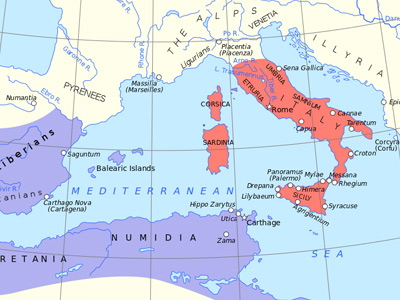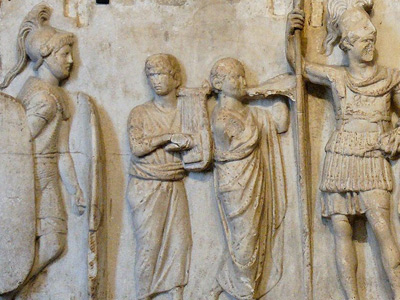Second Punic War (218-201 BC)
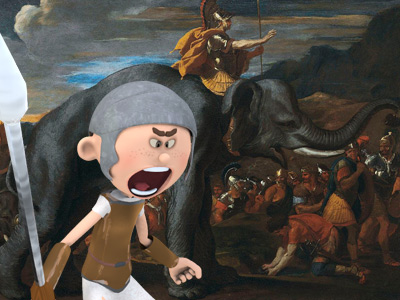
The Second Punic War, also referred to as The Hannibalic War and (by the Romans) the War Against Hannibal, lasted from 218 to 201 BC and involved combatants in the western and eastern Mediterranean. This was the second major war between Carthage and the Roman Republic The Roman Republic was a form of government of Rome and the era of the classical Roman civilization when it was run through public representation of the Roman people. Beginning with the overthrow of the Roman Kingdom (traditionally dated to 509 BC) and ending in 27 BC with the establishment of the Roman Empire, Rome's control rapidly expanded during this period - from the city's immediate surroundings to hegemony over the entire Mediterranean world. and its allied Italic socii, with the crucial participation of Numidian-Berber armies and tribes on both sides.
The Roman Republic was a form of government of Rome and the era of the classical Roman civilization when it was run through public representation of the Roman people. Beginning with the overthrow of the Roman Kingdom (traditionally dated to 509 BC) and ending in 27 BC with the establishment of the Roman Empire, Rome's control rapidly expanded during this period - from the city's immediate surroundings to hegemony over the entire Mediterranean world. and its allied Italic socii, with the crucial participation of Numidian-Berber armies and tribes on both sides.
The two states fought three major wars with each other over the course of their existence. They are called the "Punic Wars" because Rome's name for Carthaginians was Poeni, derived from Poenici (earlier form of Punici), a reference to the founding of Carthage by Phoenician settlers.
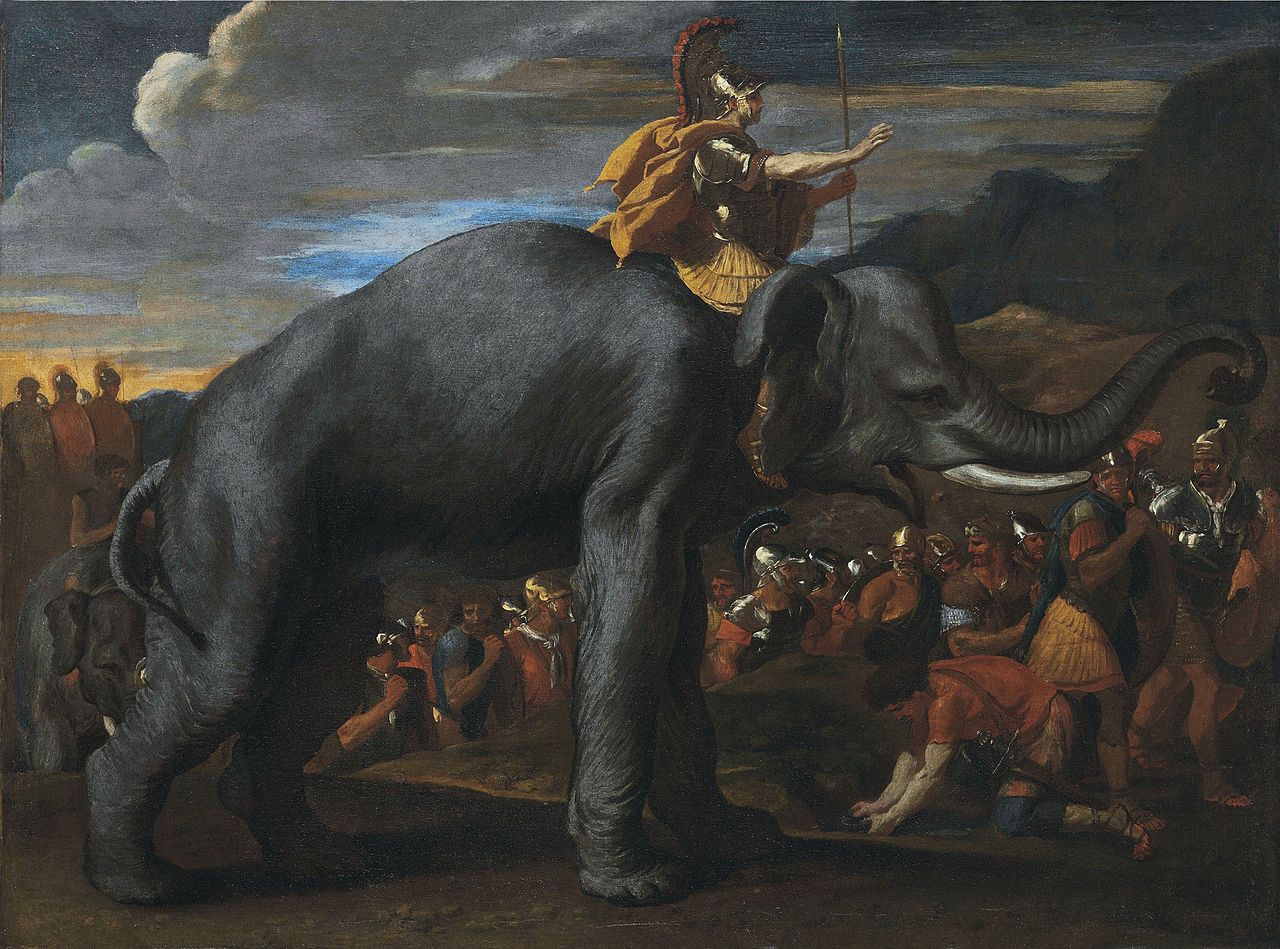
Hannibal won fame for trekking across the Alps with 37 war elephants. His surprise tactics and brilliant strategies put Rome against the ropes

Hannibal won fame for trekking across the Alps with 37 war elephants. His surprise tactics and brilliant strategies put Rome against the ropes
( Click image to enlarge)
The war was to a considerable extent initiated by Carthage at Saguntum in Spain and is marked by Hannibal's surprising overland journey and his costly crossing of the Alps, followed by his reinforcement by Gallic allies and crushing victories over Roman armies in the Battle of the Trebia and the ambush at Trasimene.
In the following year (216), Hannibal's army defeated the Romans again, this time in southern Italy at Cannae. In consequence of these defeats, many Roman allies went over to Carthage, prolonging the war in Italy for over a decade. Against Hannibal's skill on the battlefield, the Romans deployed the Fabian strategy. Roman forces were more capable in siege warfare than the Carthaginians and recaptured all of the major cities that had joined the enemy, as well as defeating a Carthaginian attempt to reinforce Hannibal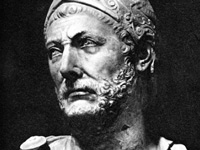 Hannibal Barca (247-183 BC), was a Carthaginian general, considered one of the greatest military commanders in history. Hannibal lived during a period of great tension in the western Mediterranean Basin, when the Roman Republic established its supremacy over other great powers such as ancient Carthage. One of his most famous achievements was at the outbreak of the Second Punic War, when he marched an army which included war elephants from Iberia over the Pyrenees and the Alps into Italy. Hannibal Barca » at the Battle of the Metaurus.
Hannibal Barca (247-183 BC), was a Carthaginian general, considered one of the greatest military commanders in history. Hannibal lived during a period of great tension in the western Mediterranean Basin, when the Roman Republic established its supremacy over other great powers such as ancient Carthage. One of his most famous achievements was at the outbreak of the Second Punic War, when he marched an army which included war elephants from Iberia over the Pyrenees and the Alps into Italy. Hannibal Barca » at the Battle of the Metaurus.
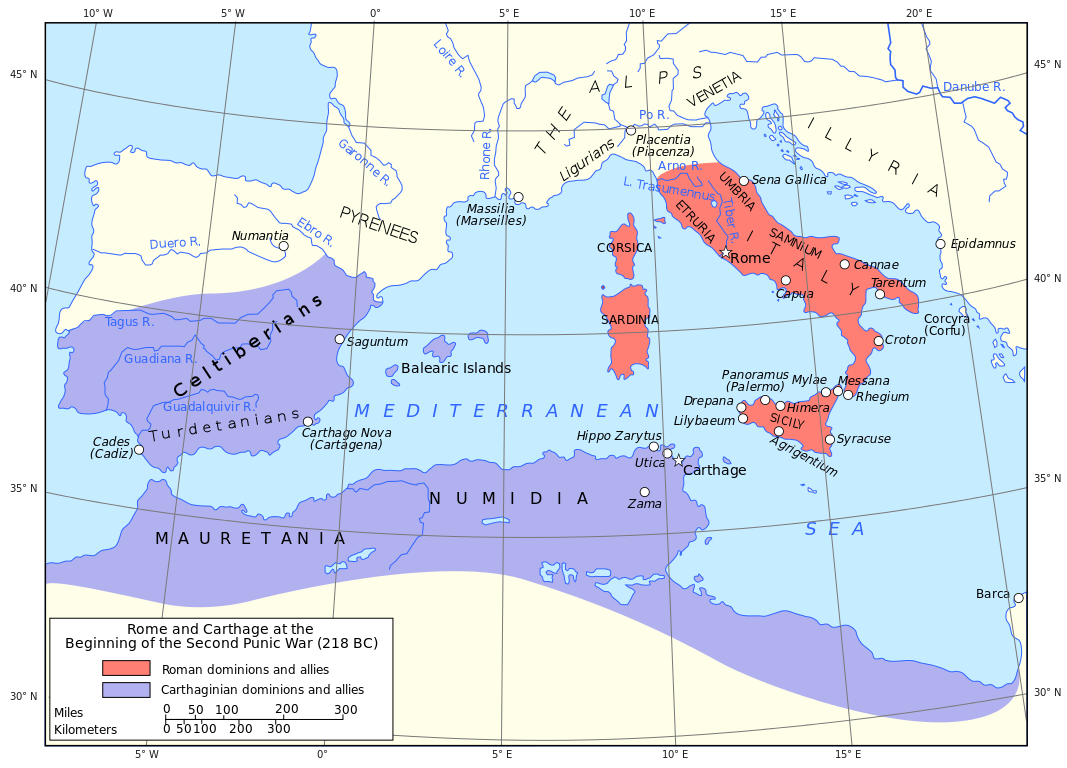
Map showing Rome and Carthage at the start of the Second Punic War and the theatre of the Punic Wars

Map showing Rome and Carthage at the start of the Second Punic War and the theatre of the Punic Wars
( Click image to enlarge)
In the meantime, in Iberia, which served as the main source of manpower for the Carthaginian army, a second Roman expedition under Publius Cornelius Scipio Africanus Major took Carthago Nova by assault and ended Carthaginian rule over Iberia in the Battle of Ilipa. The final engagement was the Battle of Zama in Africa between Scipio Africanus and Hannibal, resulting in the latter's defeat and the imposition of harsh peace conditions on Carthage (Carthaginian peace), which ceased to be a major power and became a Roman client-state.
A sideshow of this war was the indecisive First Macedonian War in the Eastern Mediterranean and the Ionian Sea.
All battles mentioned in the introduction are ranked among the most costly traditional battles of human history; in addition, there were a few successful ambushes of armies that also ended in their annihilation.
Related Articles
First Punic War (264-241 BC)
The first of three wars fought between Ancient Carthage and the Roman Republic. For more than 20 years, the two powers struggled for supremacy, primarily on the Mediterranean island of Sicily and its surrounding waters, and also in North Africa. View First Punic War (264-241 BC) »
Second Punic War (218-201 BC)
The Second Punic War, also referred to as The Hannibalic War and (by the Romans) the War Against Hannibal, lasted from 218 to 201 BC and involved combatants in the western and eastern Mediterranean. View Second Punic War (218-201 BC) »
Third Punic War (149–146 BC)
Was the third and last of the Punic Wars fought between the former Phoenician colony of Carthage and the Roman Republic. This war was a much smaller engagement than the two previous Punic Wars and focused on Tunisia. View Third Punic War (149–146 BC) »
HISTORY
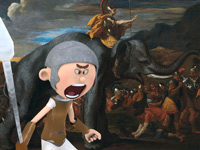
RESOURCES
This article uses material from the Wikipedia article "Second Punic War", which is released under the Creative Commons Attribution-Share-Alike License 3.0.
© Stories Preschool. All Rights Reserved.
